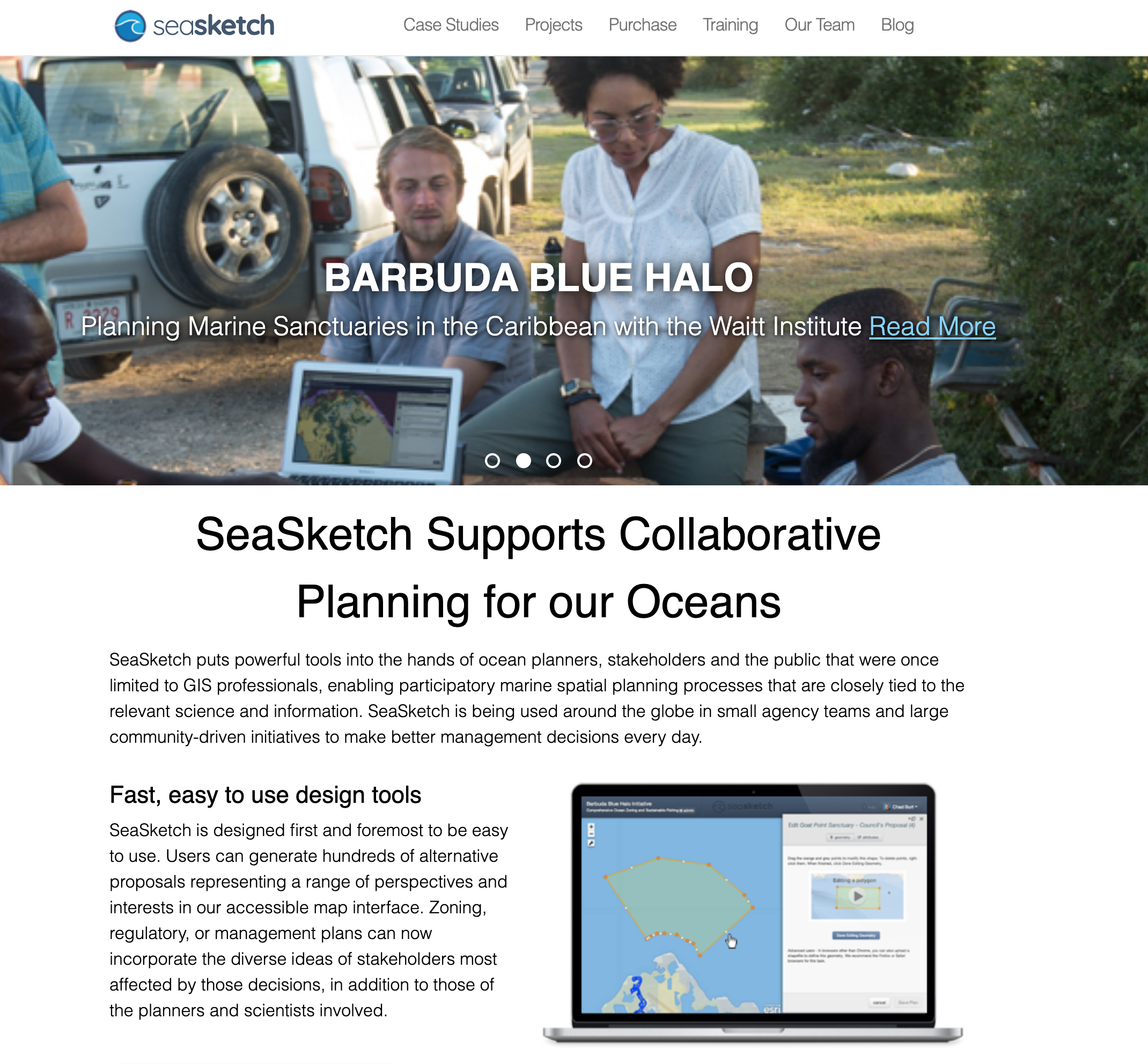

In most cases, SeaSketch is used to support large-scale planning efforts where governments have mandated the establishment of a marine spatial plan and where broad stakeholder involvement is essential. In these cases, SeaSketch must be licensed by a lead agency or partner. SeaSketch may be used to visualize geospatial data as map services, collect to information via surveys, sketch and discuss plans. If plans are to be evaluated using analytics, geoprocessing services and reports must be developed in our lab. Note that a free license is available for educational institutions to use SeaSketch for strictly educational purposes.
In January 2022, we will release the next version of SeaSketch which will be entirely free and open source. Just as with the current version, many of the features within SeaSketch may be configured with minimal knowledge of or experience with GIS. The analytics and reports will be run on lambda and encoded using programming languages such as Javascript. Owners of projects may, therefore, set up their own SeaSketch project – from beginning to end – without intervention from our lab. It should be noted, however, that the geoprocessing and reporting framework, though free and open source, will require significant programming experience.
Currently the implementing agency (such as a government body, foundation or NGO) must purchase the license and contract for developing analytics. The current version requires an Internet connection, but the next version will include some offline capabilities. Successful implementation of SeaSketch will require some assistance from a GIS technician, for example publishing and importing map services.
SeaSketch is extremely valuable in creating a transparent and collaborative atmosphere, maximizing stakeholder participation, and grounding decisions in science-based information. We see the best results when SeaSketch is used in combination with other tools such as desktop GIS applications, trade-off analyses, prioritization tools (e.g., Marxan, Prioritizr), and cumulative impact analyses.